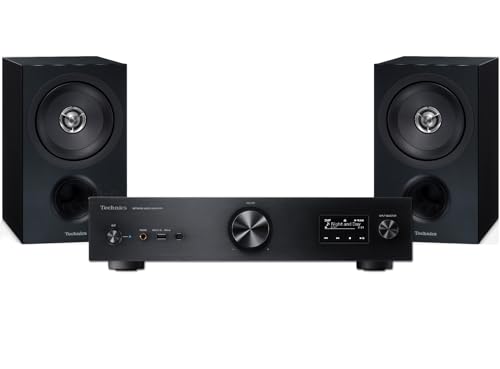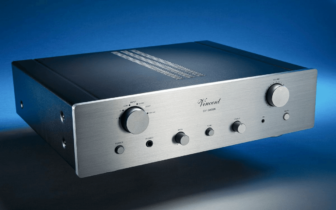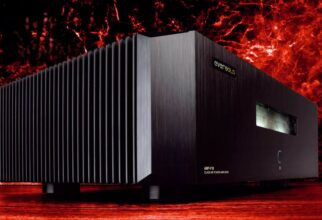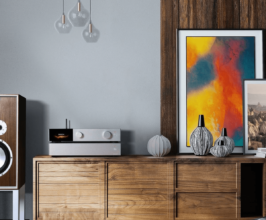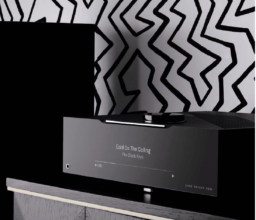Technics SU-GX70 Review
Technics SU-G70 is a classic control hub that uses the latest technology, including a digital amplifier and a switching power supply with a higher switching frequency. It comes loaded with features—but does it also impress in terms of sound?
by Alexander Rose-Fehling

At first glance, the SU-GX70 looks similar to the SU-G30 streaming amplifier we reviewed. The new model isn’t quite as hefty in build, but it offers a similar feature set—with certain advantages over the older SU-G30. Since the SU-G30 is no longer being produced, it’s good to see Technics expanding its amplifier lineup in the more affordable range.
The price is also appealing when you consider the broad array of useful features. On the analog side, it provides three RCA inputs, including one for MM phono.
For digital sources, there are four inputs: two optical, one coaxial, and one USB-B port for PC. You could also count the front USB-A input for storage drives. Strictly speaking, there’s also the HDMI port (ARC), the first of its kind on a Technics amplifier.
HDMI for ARC
This is a special feature. Technics is part of the Panasonic group, a large player in TVs and Blu-ray players. Panasonic also participated in the HDMI consortium that set the HDMI standard. By standard, the Audio Return Channel (ARC) doesn’t just carry audio signals—it must also transmit a video signal. That can degrade sound quality, so Technics found a way to meet the standard without losing audio clarity. The solution: they set the video bits to zero. Essentially, the video bits are “switched off,” so they don’t interfere with the audio signal.
Another place Technics wants to minimize unwanted influence is speaker impedance. Since speaker resistance changes constantly with frequency, Technics uses Load Adaptive Phase Calibration (LAPC) to make sure the varying impedance has as little impact on sound as possible. LAPC measures the phase and impedance characteristics of the connected speakers with a series of test signals. The amplifier then uses an algorithm to adapt to the measured data. In theory, this improves impulse response and creates an almost perfectly linear frequency response. Imaging and depth should also benefit. After calibration, you can switch LAPC on or off at any time, which is useful.
The heart beats digitally
The SU-GX70’s core is its fully digital amplification section. All analog signals are digitized first, then travel digitally all the way to the power amp. Once in digital form, they are less prone to interference, resulting in higher precision and lower noise. Technics calls this the JENO Engine (Jitter Elimination and Noise-Shaping Optimization), which they’ve used for a while. Some might worry about converting analog signals, but in terms of sound, there’s no real downside. With today’s technology, good conversion isn’t readily detectable by ear.

The plastic remote feels good in the hand and has a well-organized layout. You can control all of the Technics’ functions with it.
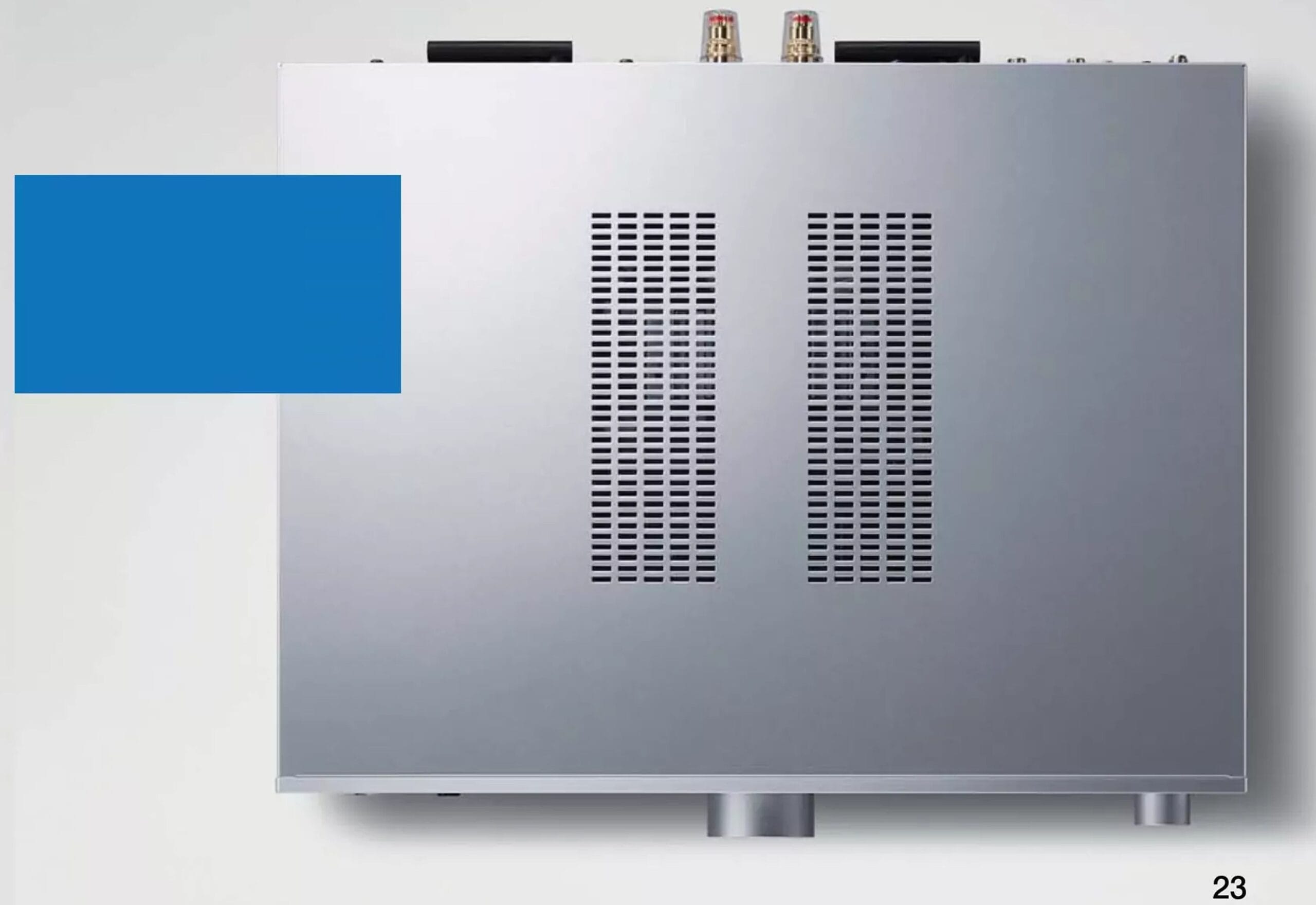
The Technics SU-GX70 looks refined from every angle, with high-quality craftsmanship and well-made controls.
You can get even more clarity by using the two-stage “pure amplifier mode.” It lets you switch off unused functions—either Network, USB, and Bluetooth, or HDMI, or all at once—to prevent these circuits from adding noise. The display also turns off a few seconds after you make an adjustment. You can hear an immediate improvement, though it isn’t huge.
The SU-GX70 doesn’t include a full room-correction feature, but it does have EQ controls and “Space Tune.” This offers four presets for placing your speakers close to a wall, in an open area, in a corner, or on a shelf. A clever twist: if one speaker must go in a corner and the other on a shelf, you can set the left and right channels differently in the free Technics Audio Center app.
Phono and lab
The MM phono board is built with discrete components and measures very well (47 kiloohms, 140 picofarads, 39 dB gain). Its frequency response is clean and has no subsonic filter—and it also sounds excellent. Compared with the SU-G30, the SU-GX70 delivers less power (though the older model was much more expensive). With 50 watts into 8 ohms and 90 watts into 4 ohms, the GX70 isn’t a powerhouse but should be fine for most needs. Its load stability is good, though at 15 kHz there’s a 1.7 dB difference in level between 8 ohms and 2 ohms. The headphone amp sounds wonderful, but it can’t power very demanding headphones because it provides only a small amount of power.
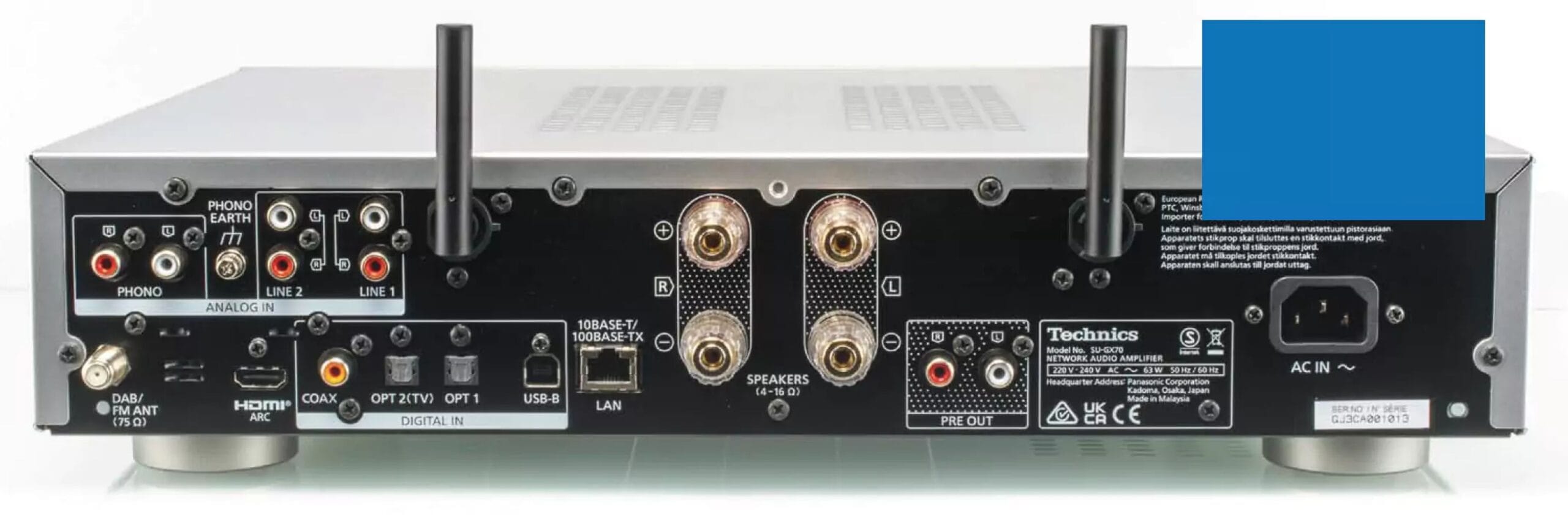
A practical range of connections, including an excellent Phono MM input.
Power consumption is modest: the GX70 uses 27 watts while idle, 0.2 watts in standby, or 1.1 watts in network standby with HDMI pass-through enabled.
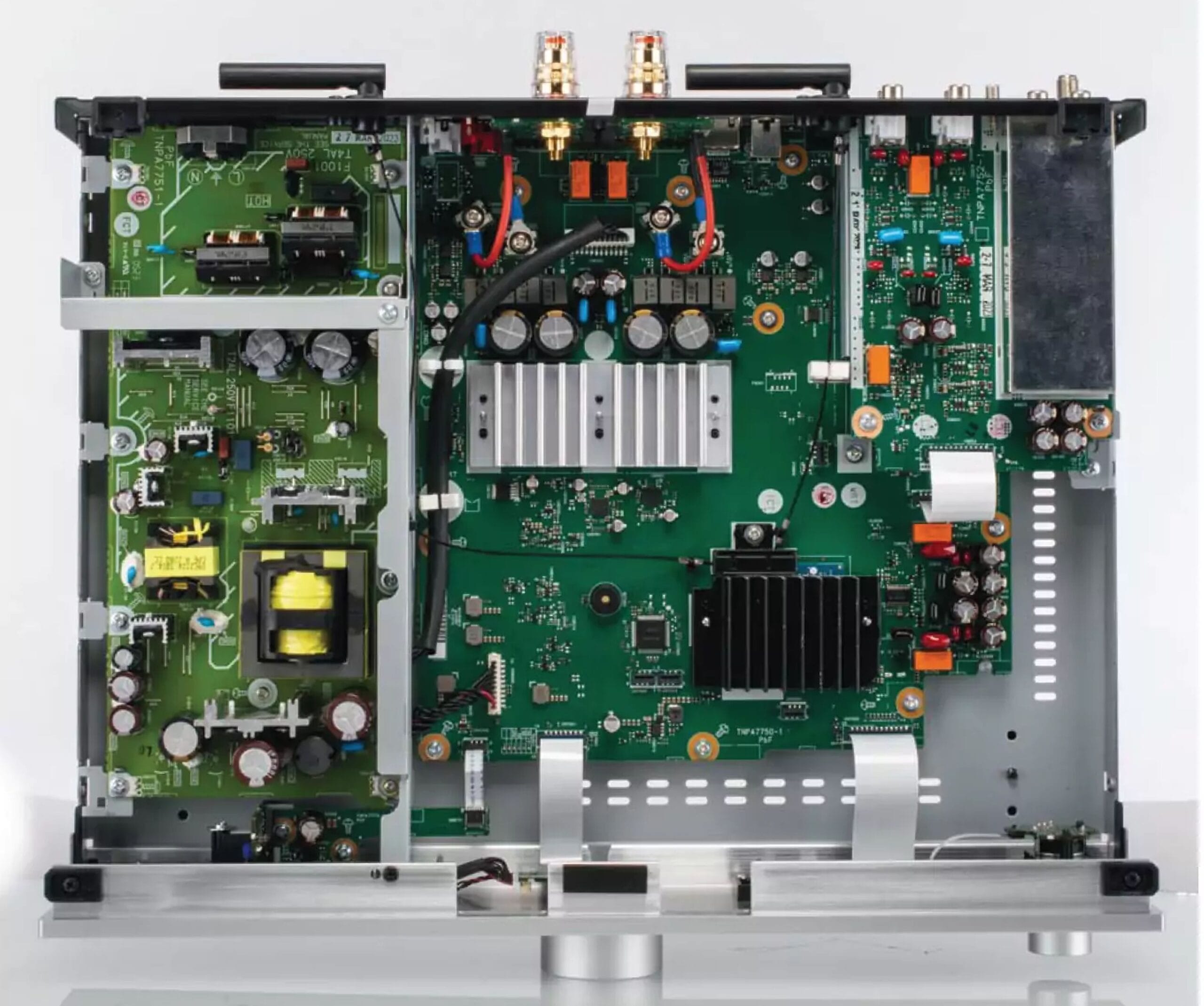
The left third of the unit contains the split power supplies (for signal processing and amplification). The rest is the audio circuitry. The top-right phono board is shielded. Noise levels for phono, digital, and analog inputs are excellent.
Regarding build quality, the Technics is quite impressive for its price. The volume knob is solid, stiff to turn, and milled from a single block. The input selector is also made of aluminum, as is the front panel. The cover is steel. The design, including its height, is matched to the SACD player/streamer SL-G700M2, which has even more of a vault-like build (and a much higher price). Since we use the G700M2 as our reference player (as we did its predecessor), we tried them together. Out of the box, their remotes interfere with each other. For example, when you navigate the GX70’s menu, the G700 responds as well. You can avoid that by using the app, which makes sense anyway, since the issue only appears during menu navigation, not during normal use like adjusting volume or playback. Alternatively, you can change the remote codes.
Sound
In both my living room and the listening room, the Technics showed no weaknesses. No matter what settings we chose, the SU-GX70 kept a consistent sonic character: controlled, detailed, more punchy than laid-back, and always clean. Listening to Metallica’s “Fuel” and “Slither” (from the “Reload” album, played on the notably neutral Acoustic Signature Hurricane NEO fitted with a Hana Umami Blue and Closer’s Flo phono stage), we heard drive and power. Everything sounded precise. Turning on LAPC sometimes made the sound a little better or, depending on the speakers and music, not necessarily so. For Metallica, the added focus and wider soundstage weren’t a huge gain, so it often comes down to personal taste. I usually preferred having LAPC on. It sounded more audiophile, especially when we also enabled the “Pure Amplification Mode,” which goes in the same direction. With jazz or well-produced pop, we heard a clear improvement. Here, it’s worth experimenting.
On top of that, the option to set speaker placement makes the Technics a problem-solver. Space Tune works really well; we were even able to position bigger floorstanding speakers close to the wall without losing much audio quality.
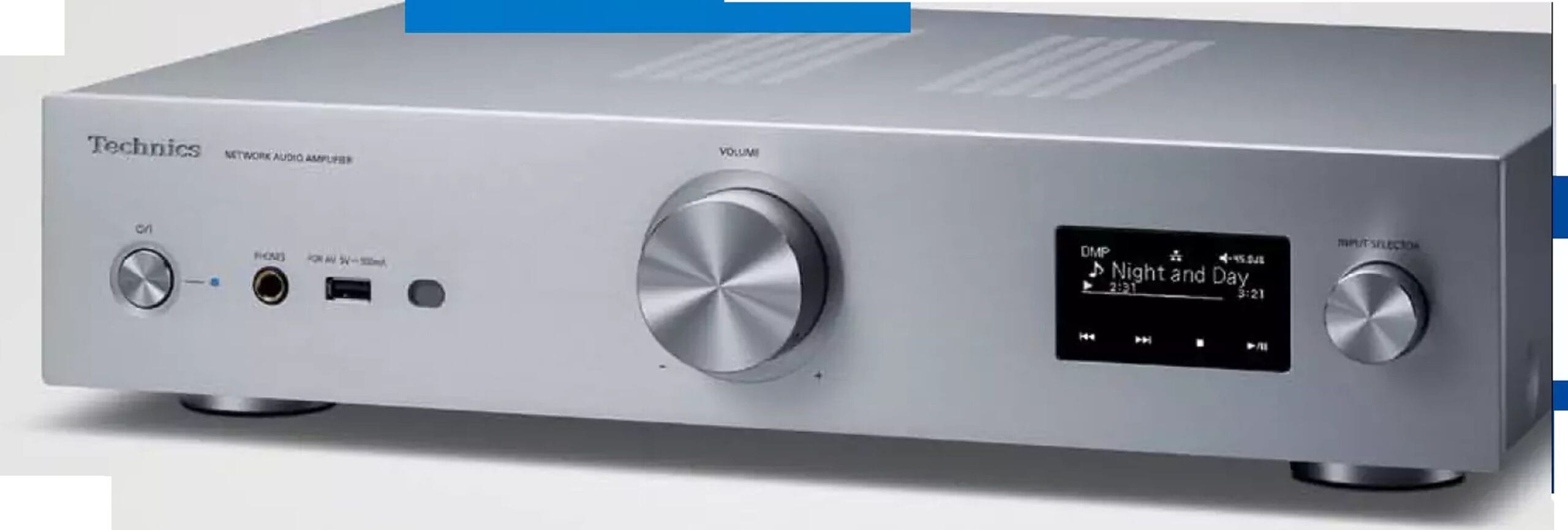
In “Pure Amplification” mode, the display automatically turns off after a few seconds.
Streaming also worked perfectly. We’ve seen this same reliability with their SACD player.
When streaming (Amazon Music, Qobuz, Spotify, Tidal, plus Chromecast, AirPlay 2, and Bluetooth), everything also worked flawlessly. That’s consistent with our experience using the Technics SACD/streaming player.
Finally, the MM phono preamp is so good that I’ve rarely seen this level of quality in an integrated amp at this price. I could almost skip an external box.
Technics Specs
Dimensions (WxHxD): 43 x 10 x 37 cm
Weight: 6.6 kg
Sinus Power (1 kHz, THD = 1%)
• At 8 Ω: 49 W
• At 4 Ω: 88 W
Music Power (60 Hz Burst)
• At 8 Ω: 49 W
• At 4 Ω: 90 W
Signal-to-Noise Ratio
• Line (10 V into 8 Ω): 101 dB
• Phono MM/with cartridge (10 V into 8 Ω): 82 / 78 dB
Power Consumption
• Standby/Operation: 0.2–1.1 / 27 W
Ratings (originally “8” on a scale up to 10) • Measurements: ~8 / 10
• Practical Use: ~8 / 10
• Build Quality: ~8 / 10
Sound (Analog / Streaming / USB)
• Original scores: 51 / 52 / 53 (on a scale of ~70)
• Approx. 10-point equivalents: 7.3 / 7.4 / 7.6
Overall Score
• 75 points total → approx. 7.5 / 10
• Price/Performance: “outstanding”
Measurement charts
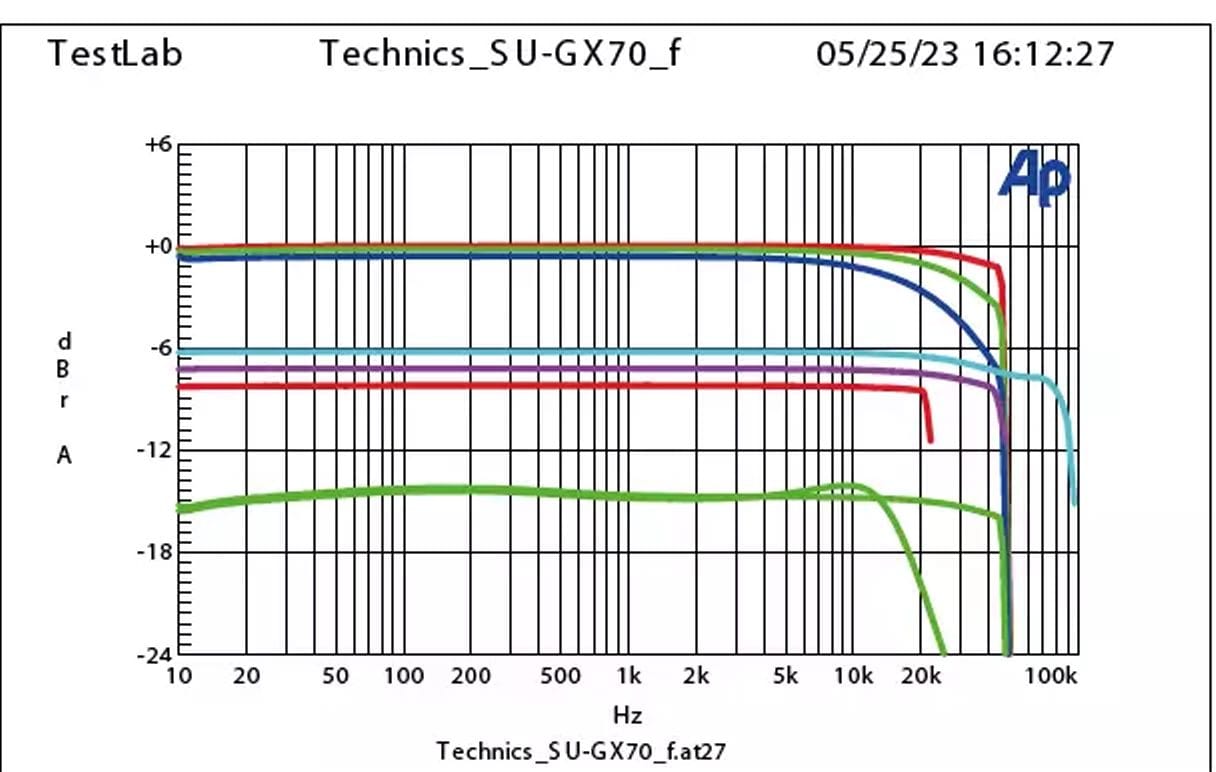
Frequency responses: Very linear. Shows a -1.7 dB drop in the treble range at 2 ohms vs. 8 ohms. Excellent result for Phono MM.
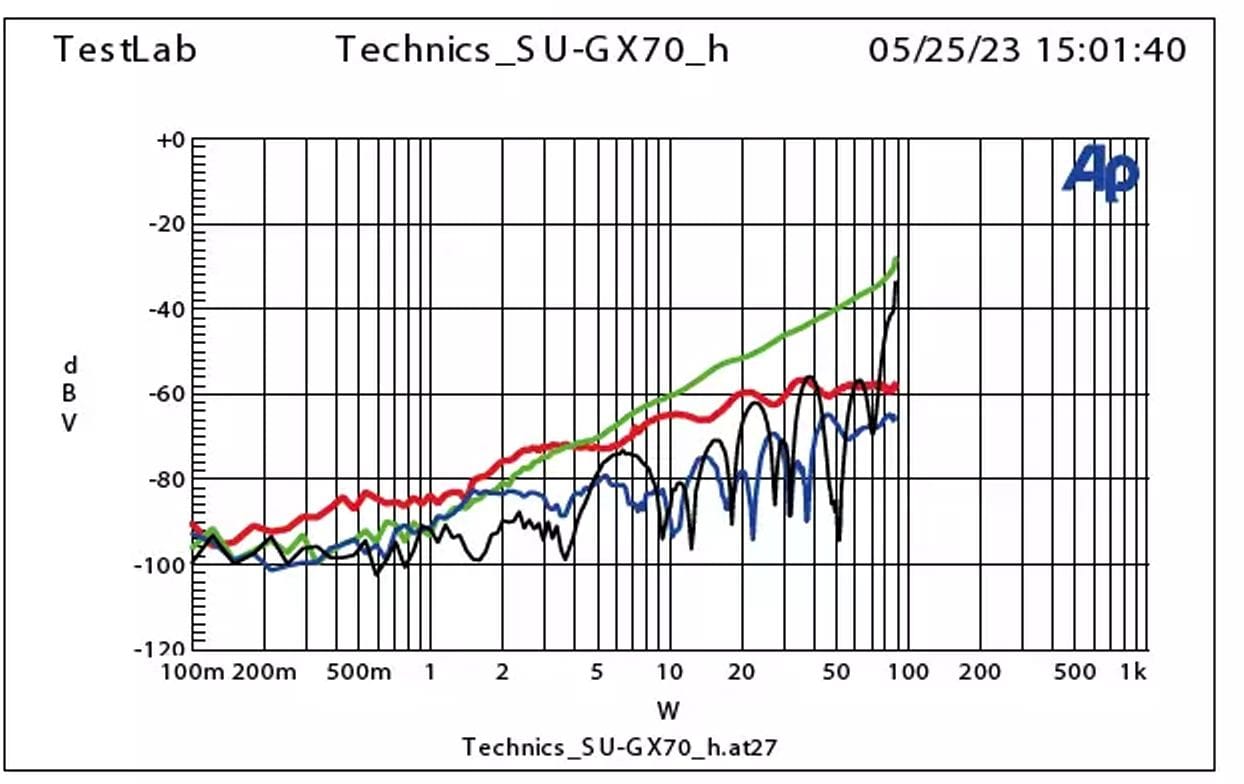
Distortion analysis k2 to k5 vs. power: A slightly uneven curve, with minimal extra k3 (green). Total distortion at 10 W: 0.02%.
Handles power-hungry speakers well. Stable behavior with complex loads.
Conclusion:
The Technics SU-GX70 streaming amp is a flexible, fully featured problem-solver that draws the best out of speakers that aren’t extremely demanding. It delivers clear, dynamic, and audiophile-grade sound.
When you purchase through links on our site, I may earn an affiliate commission. Here’s how it works.
Technics SU-GX70 Network Integrated Amplifier Review | TS Reports...
Thomas&Stereo reviews the Technics SU-GX70 Network Integrated Amplifier Review Newsletter: ...

